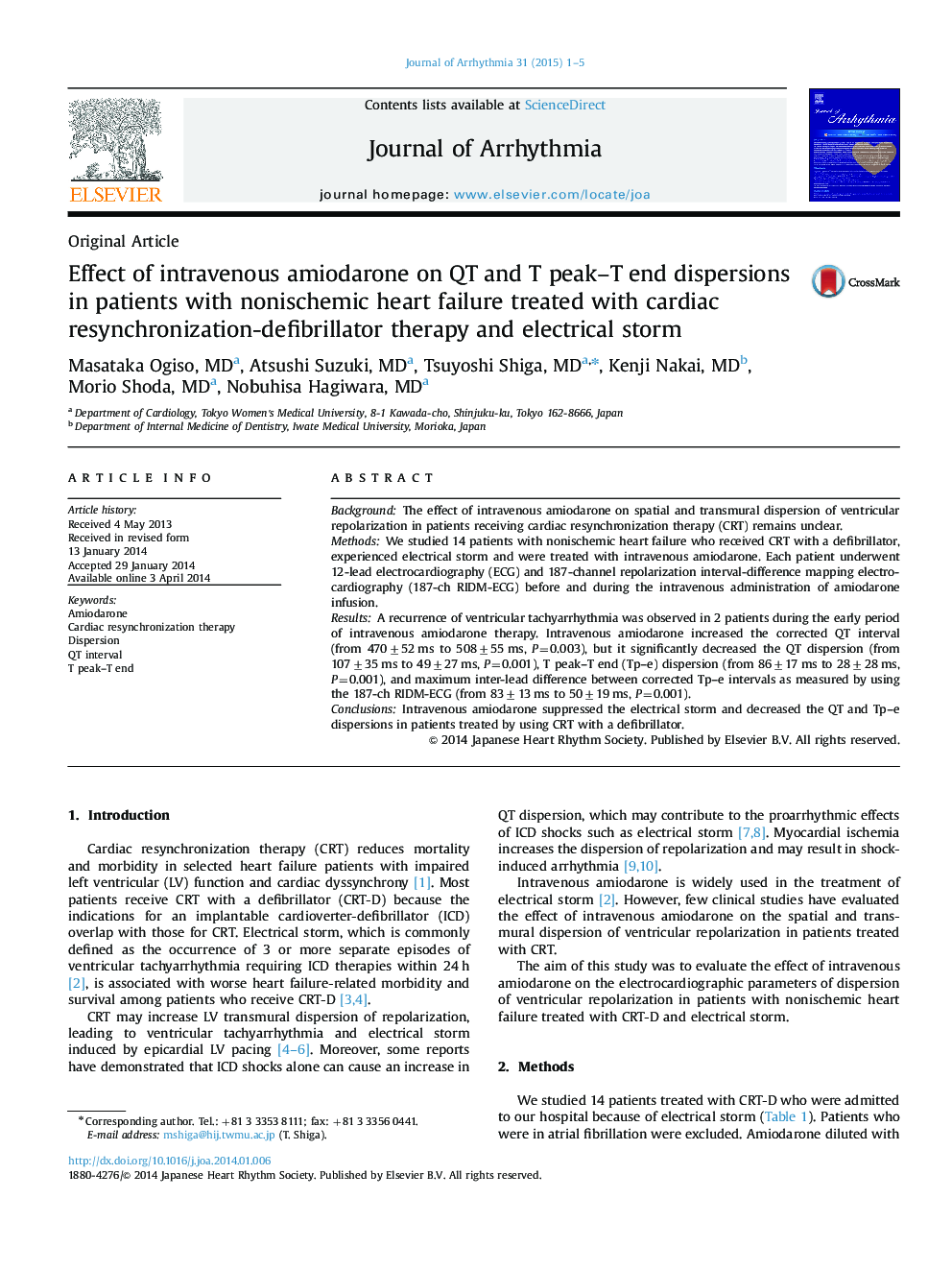| Article ID | Journal | Published Year | Pages | File Type |
|---|---|---|---|---|
| 2957669 | Journal of Arrhythmia | 2015 | 5 Pages |
BackgroundThe effect of intravenous amiodarone on spatial and transmural dispersion of ventricular repolarization in patients receiving cardiac resynchronization therapy (CRT) remains unclear.MethodsWe studied 14 patients with nonischemic heart failure who received CRT with a defibrillator, experienced electrical storm and were treated with intravenous amiodarone. Each patient underwent 12-lead electrocardiography (ECG) and 187-channel repolarization interval-difference mapping electrocardiography (187-ch RIDM-ECG) before and during the intravenous administration of amiodarone infusion.ResultsA recurrence of ventricular tachyarrhythmia was observed in 2 patients during the early period of intravenous amiodarone therapy. Intravenous amiodarone increased the corrected QT interval (from 470±52 ms to 508±55 ms, P=0.003), but it significantly decreased the QT dispersion (from 107±35 ms to 49±27 ms, P=0.001), T peak–T end (Tp–e) dispersion (from 86±17 ms to 28±28 ms, P=0.001), and maximum inter-lead difference between corrected Tp–e intervals as measured by using the 187-ch RIDM-ECG (from 83±13 ms to 50±19 ms, P=0.001).ConclusionsIntravenous amiodarone suppressed the electrical storm and decreased the QT and Tp–e dispersions in patients treated by using CRT with a defibrillator.
